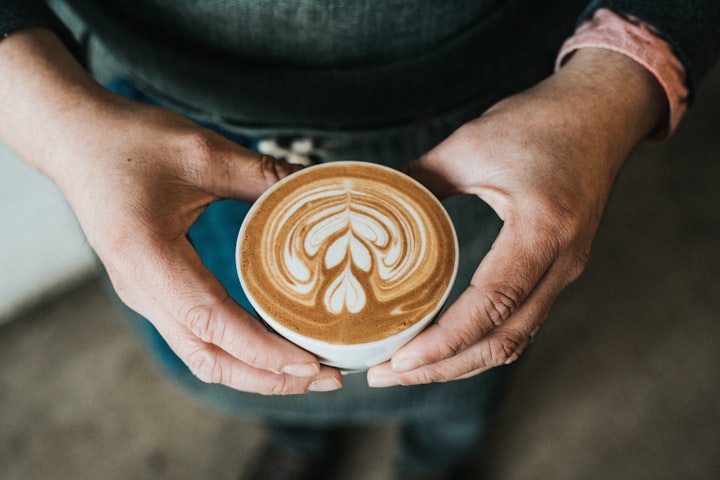Coffee Lovers Rejoice: The Ultimate Guide to the World's Most Popular Beverage
Experience the World of Coffee: Types, Culture, and Health Benefits

Introduction
Coffee is a popular beverage enjoyed by millions of people around the world. It is made from the roasted seeds of the Coffea plant and has a rich history that dates back centuries. In this guide, we will explore the different types of coffee, brewing methods, and the coffee culture that has developed around this beloved beverage.
Brief history of coffee:
Coffee is believed to have originated in the highlands of Ethiopia, where it is said that a goat herder named Kaldi discovered the coffee plant after noticing that his goats became more energetic after eating the berries from the plant. The coffee plant was then cultivated and traded in the region for centuries, before eventually spreading to the Middle East and beyond.
In the 15th and 16th centuries, coffee became popular in Europe and was initially consumed in coffee houses, which were seen as places for intellectual discussion and socialization. In the centuries that followed, coffee became a staple beverage around the world and is now the second most traded commodity on the global market, behind only petroleum.
Overview of coffee production and consumption today:
Coffee is grown in countries around the world, with the largest producers being Brazil, Vietnam, and Colombia. The vast majority of coffee is grown on small, family-owned farms, and coffee production is an important source of income for millions of people around the world.
Coffee is consumed in many forms, including as a hot beverage, iced coffee, and in various food and drink products such as cakes, ice cream, and energy drinks. It is estimated that more than 2.25 billion cups of coffee are consumed worldwide every day.
Types of coffee:
Arabica vs. Robusta:
Arabica and Robusta are the two main species of coffee plants. Arabica is generally considered to produce a higher-quality, milder-tasting coffee, while Robusta is stronger and more bitter in taste. Most specialty coffees are made from Arabica beans, while Robusta is often used in instant coffee and cheaper, mass-produced blends.
Single origin vs. blend:
Single origin coffee is made from beans that all come from the same region or country. These types of coffee often have unique flavors and characteristics that are specific to the region where the beans are grown.
Blend coffee, on the other hand, is made from beans from multiple origins. Blends are often created to achieve a specific flavor profile and may consist of beans from different regions or countries.
Light, medium, and dark roasts:
Coffee is also categorized by its roast level, which refers to how long the beans were roasted for. Light roast coffee is roasted for a shorter amount of time and has a lighter body and acidity, while dark roast coffee is roasted for a longer period of time and has a fuller body and a more pronounced roast flavor. Medium roast falls somewhere in between, with a balance of body and acidity.
Brewing methods
Drip coffee makers:
Drip coffee makers are the most common type of coffee maker and can be found in many homes and offices. These machines brew coffee by heating water and dripping it over ground coffee beans that are contained in a filter. The brewed coffee is then collected in a carafe or pot.
French press:
A French press, also known as a cafetière or coffee press, is a cylindrical glass or stainless steel pot with a plunger and a metal or nylon mesh filter. To use a French press, coarsely ground coffee is added to the pot, hot water is poured over the grounds, and the mixture is allowed to steep for a few minutes. The plunger is then pressed down to separate the brewed coffee from the grounds.
Pour over:
Pour over brewing involves manually pouring hot water over ground coffee beans that are contained in a filter. This method allows the user to have more control over the brewing process, including the water temperature and flow rate.
Espresso machines:
Espresso machines brew coffee by forcing hot water through tightly packed, finely ground coffee beans at high pressure. The resulting shot of espresso is concentrated and has a strong flavor. Espresso is the base for many other coffee drinks, such as cappuccinos and lattes.
Cold brew:
Cold brew coffee is made by steeping coarsely ground coffee beans in cold water for an extended period of time, typically 12-24 hours. The resulting coffee is less acidic and has a smooth, mellow flavor. It can be served hot or over ice.
Coffee culture
Specialty coffee shops:
Specialty coffee shops are dedicated to serving high-quality, specialty-grade coffee. These shops often source their beans directly from coffee farmers and pay higher prices for high-quality beans. They may also offer a variety of brewing methods and may have trained baristas who can prepare a range of coffee drinks.
Coffee culture around the world:
Coffee culture varies around the world, with different countries and regions having their own unique traditions and practices. For example, in Italy, espresso is the most popular form of coffee and is often consumed standing up at the bar. In Turkey, coffee is an important part of social and cultural gatherings and is often served with water and Turkish delight. In the United States, coffee shops have become a popular place for people to work, socialize, and relax.
Coffee subculture:
There are many subcultures within the coffee world, including the so-called "third wave" coffee movement. This movement emphasizes the importance of sourcing high-quality, specialty-grade coffee beans and brewing them using precise and artisanal methods. Third wave coffee shops often have knowledgeable baristas who can discuss the origins and characteristics of the beans they are serving and may also offer pour over and other specialty brewing methods.
Health benefits and concerns
Benefits of moderate coffee consumption:
There have been many studies on the potential health benefits of coffee, and it appears that moderate coffee consumption may have a number of benefits. For example, coffee is a good source of antioxidants, which are substances that help protect cells from damage caused by free radicals. Some studies have also found that coffee consumption may be associated with a reduced risk of certain diseases, such as Parkinson's disease, type 2 diabetes, and liver disease.
Concerns about overconsumption:
However, it is important to note that coffee does contain caffeine, which is a stimulant that can affect the body in a number of ways. Consuming too much caffeine can lead to negative side effects such as insomnia, jitters, and increased heart rate. It is generally recommended that adults consume no more than 400 mg of caffeine per day, which is about 4 cups of coffee. It is also important to note that the effects of caffeine can vary from person to person and may be influenced by factors such as age, weight, and overall health.
Conclusion:
In conclusion, coffee is a popular and beloved beverage enjoyed by people around the world. There are many types of coffee, including Arabica, Robusta, single origin, and blend, and coffee can be enjoyed using a variety of brewing methods such as drip coffee makers, French press, pour over, espresso machines, and cold brew.
Coffee culture has developed around the world, with specialty coffee shops and coffee subcultures such as the third wave coffee movement emphasizing the importance of sourcing high-quality beans and brewing methods.
While there are potential health benefits to moderate coffee consumption, it is important to be mindful of the caffeine content of coffee and to consume it in moderation.
For those interested in further exploring the world of coffee, there are many opportunities for tasting flights, visiting coffee-producing countries, and learning more about different brewing methods and the characteristics of different types of beans. Overall, coffee is a diverse and fascinating beverage with a rich history and culture that offers something for everyone.
About the Creator
Enjoyed the story? Support the Creator.
Subscribe for free to receive all their stories in your feed. You could also pledge your support or give them a one-off tip, letting them know you appreciate their work.





Comments
There are no comments for this story
Be the first to respond and start the conversation.